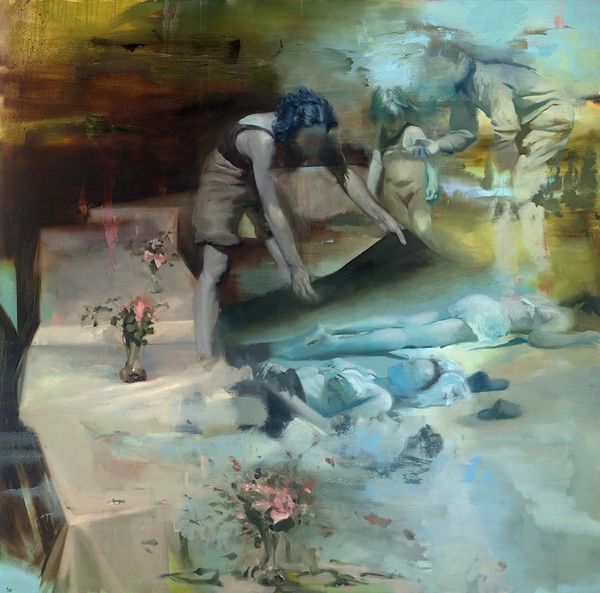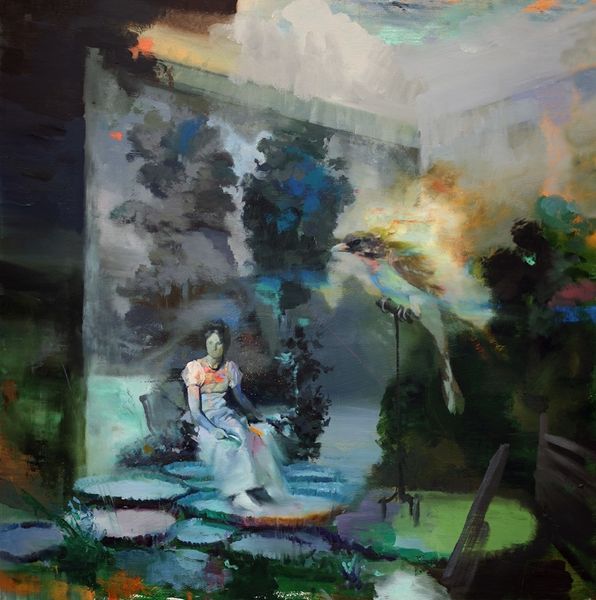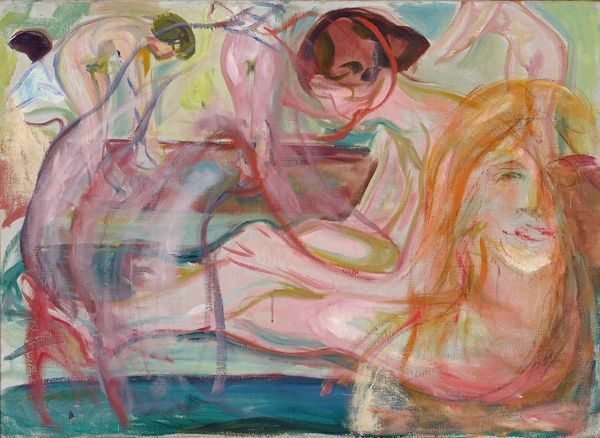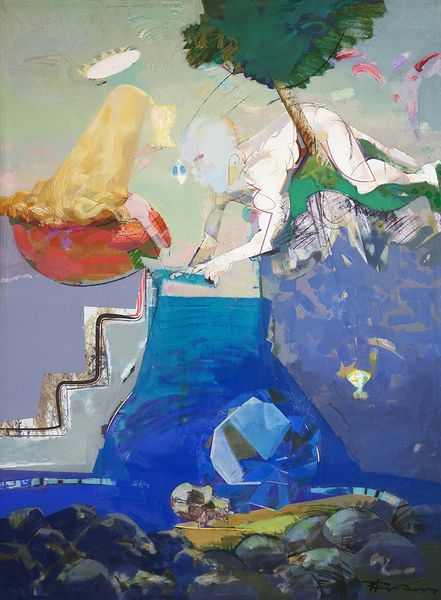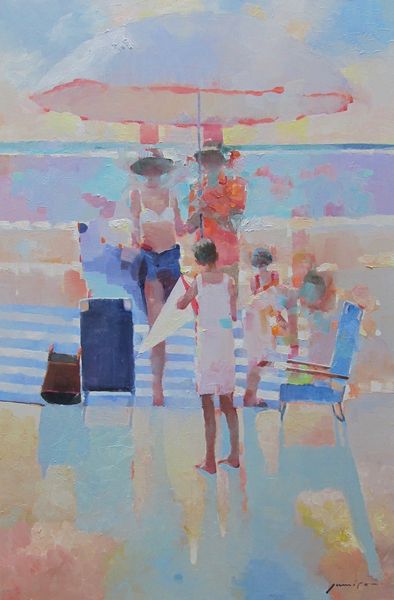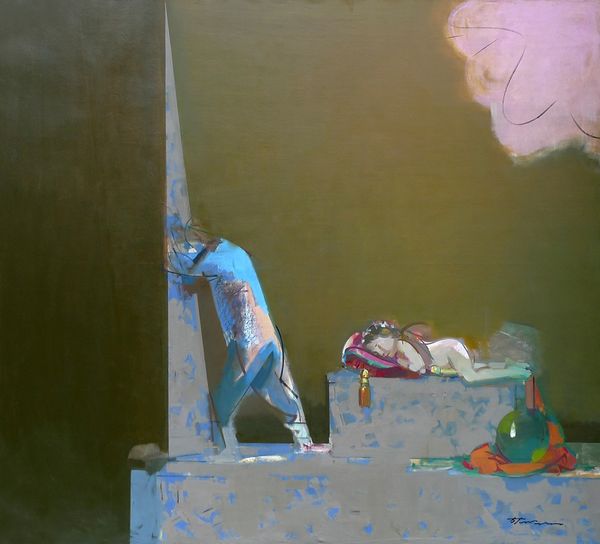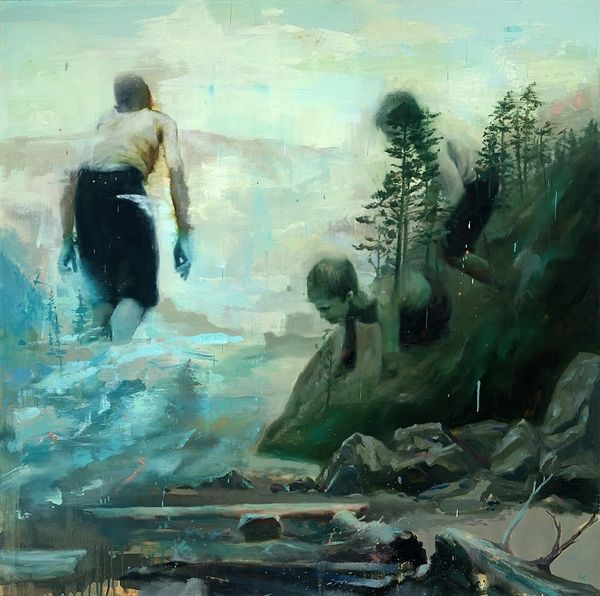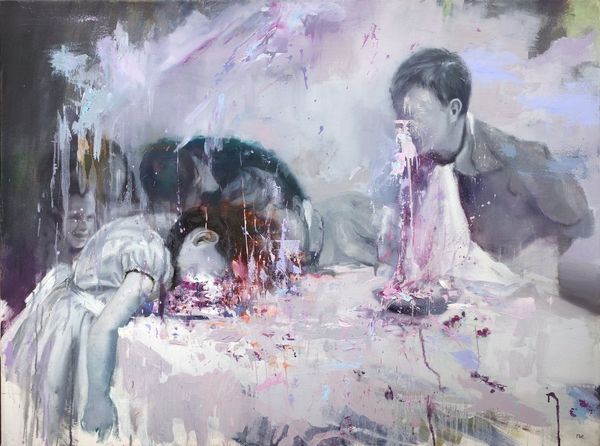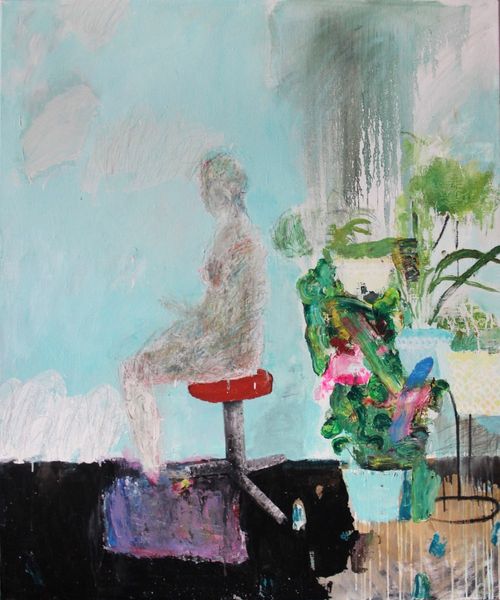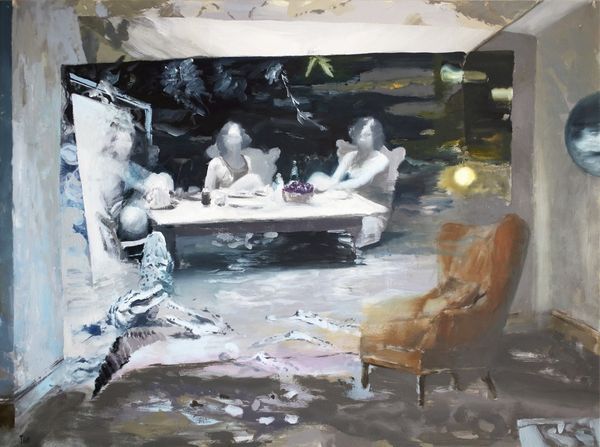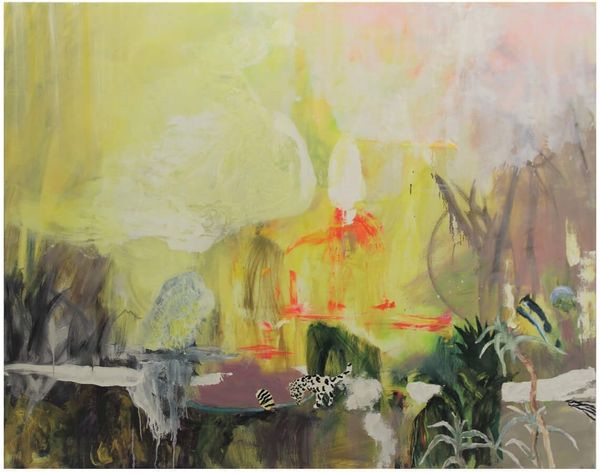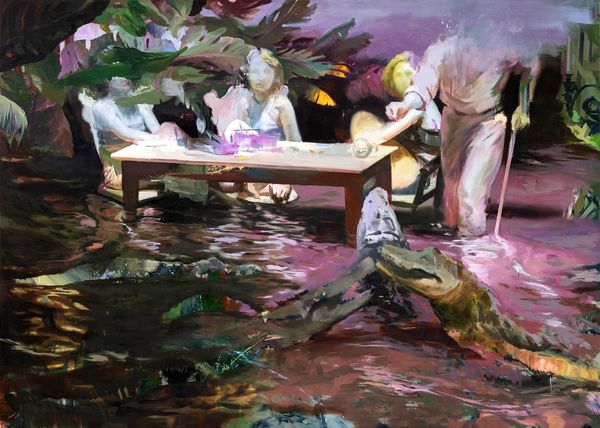
Copyright: Modern Artists: Artvee
Curator: Joshua Flint's "Sea Monsters," created in 2020 using acrylic paint, immediately strikes me with its peculiar blend of tranquility and unease. The hazy figures feel almost ghost-like. Editor: The surface is indeed unsettling. There's a tension between the representation of figures, possibly young women, and that stark juxtaposition with an oceanic horizon viewed from above, creating an unreal perspective, the flat planes clash, undermining spatial coherence. Curator: I’m interested in Flint’s application of acrylics here; it moves beyond merely applying color. It actively constructs this disorienting liminal space. Acrylics allowed for quick layering, reflecting modern industrial processes which demand efficiency. He has built up color, destroyed its definition with brushstrokes; these girls could be ghosts because they haven’t lived up to the industrial standard of progress. Editor: And that luminous band of greenish color falling from the simulated sky emphasizes that this piece uses planes of pure color, arranged to achieve an overall balance. What do you make of his clear references to the Post-Impressionist palette and fractured pictorial space? Curator: Well, the expressionistic tendencies signal a post-industrial melancholy—a longing for nature coupled with alienation. Flint explores the socio-psychological landscape—particularly how it impacts perceptions of ourselves. There's this deep undercurrent of environmental concern here, couched in the ghostly play of childhood—are those girls alive even? Editor: The very execution of this oil painting seems to explore memory and spatial fragmentation. I observe, how even if its technique nods at traditional landscape genres, it defies easy categorization because it dismantles conventions of representation via those stark geometric planes, interrupting our expectations of coherence and thus forcing us to reconstruct and contemplate our own perceptions. Curator: Perhaps that disruption echoes our precarious relationship to both nature and manufactured realities. What stands out to you most vividly after our chat? Editor: Ultimately, I am left reflecting on the potent disjunction and precarious tension generated between the traditional genre expectations and Flint's disquieting, constructed view of landscape. What do you consider a lasting impression from this review? Curator: Flint encourages us to question the human impact on the environment and the role of manufactured realities on our perception of memory. It is haunting in the most profound way.
Comments
No comments
Be the first to comment and join the conversation on the ultimate creative platform.
